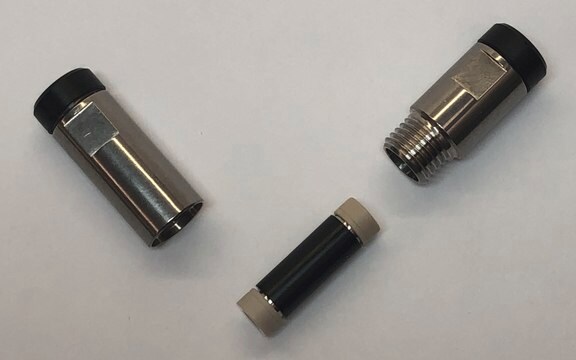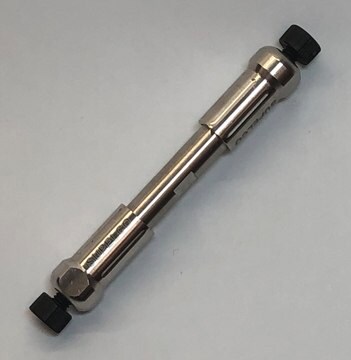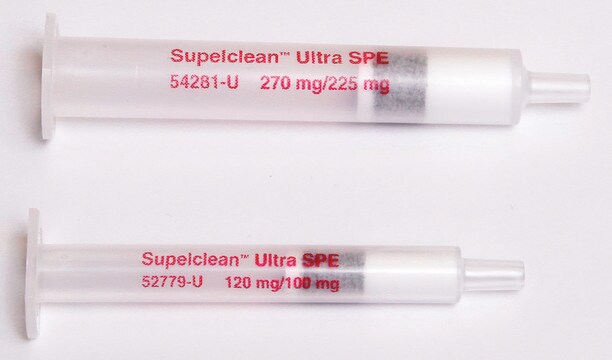59989-U
Supel™ Carbon LC (2.7 µm) HPLC Columns
L × I.D. 2 cm × 3.0 mm, HPLC Column Kit
Synonym(e):
Supel™ Carbon LC, 2.7 μm HPLC Column
About This Item
Empfohlene Produkte
product name
Supel™ Carbon LC, 2.7 μm HPLC Guard Cartridge Kit, Kit, L × I.D. 2 cm × 3.0 mm
Materialien
stainless steel column
Agentur
suitable for USP L109
Produktlinie
Supel™
Verpackung
pkg of 1 kit
Parameter
≤250 °C temp. limit
≤9000 psi max. pressure (620 bar)
Methode(n)
HPLC: suitable
LC/MS: suitable
UHPLC-MS: suitable
UHPLC: suitable
L × ID
2 cm × 3.0 mm
Oberflächenbereich
155 m2/g
Matrix
porous graphitic carbon (PGC) particle platform
Partikelgröße
2.7 μm
Porengröße
200 Å pore size
operating pH range
1-14
Trenntechnik
mixed mode
reversed phase
Suchen Sie nach ähnlichen Produkten? Aufrufen Leitfaden zum Produktvergleich
Allgemeine Beschreibung
and enhanced retention of compounds typically requiring hydrophilic interaction liquid chromatography (HILIC) to retain. Through the use of patent-pending synthetic procedures, a narrow particle size distribution is prevalent with this technology, further enhancing the chromatographic performance that this column can display.
Hinweis zur Analyse
Empfohlene Produkte
Rechtliche Hinweise
Ähnliches Produkt
Lagerklassenschlüssel
13 - Non Combustible Solids
WGK
nwg
Flammpunkt (°F)
Not applicable
Flammpunkt (°C)
Not applicable
Hier finden Sie alle aktuellen Versionen:
Analysenzertifikate (COA)
Leider sind derzeit keine COAs für dieses Produkt online verfügbar.
Wenn Sie Hilfe benötigen, wenden Sie sich bitte an Kundensupport
Besitzen Sie dieses Produkt bereits?
In der Dokumentenbibliothek finden Sie die Dokumentation zu den Produkten, die Sie kürzlich erworben haben.
Verwandter Inhalt
Supel™ Carbon LC U/HPLC columns packed with porous graphitic carbon (PGC) particles, used for the HPLC, UHPLC, UPLC, and LC-MS separation of polar or charged compounds at high temperatures (up to 250 ˚), pressures up to 700 bar, and the mobile phase pH range of 1-14.
Unser Team von Wissenschaftlern verfügt über Erfahrung in allen Forschungsbereichen einschließlich Life Science, Materialwissenschaften, chemischer Synthese, Chromatographie, Analytik und vielen mehr..
Setzen Sie sich mit dem technischen Dienst in Verbindung.






